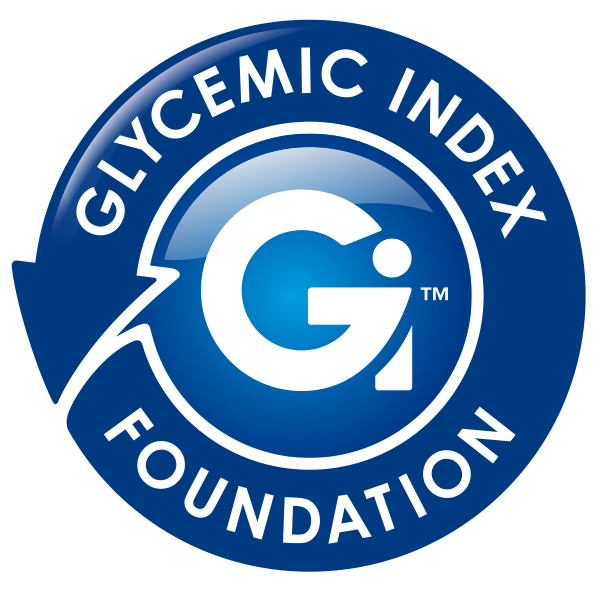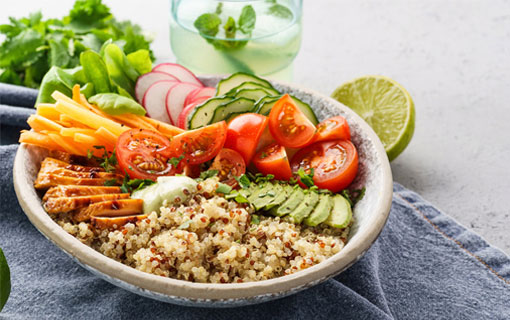GI and Carbohydrates
A low GI diet focuses on the quality of the carbohydrate rather than the quantity. It is the quality of the carbohydrate that’s most important for long term health and wellbeing.
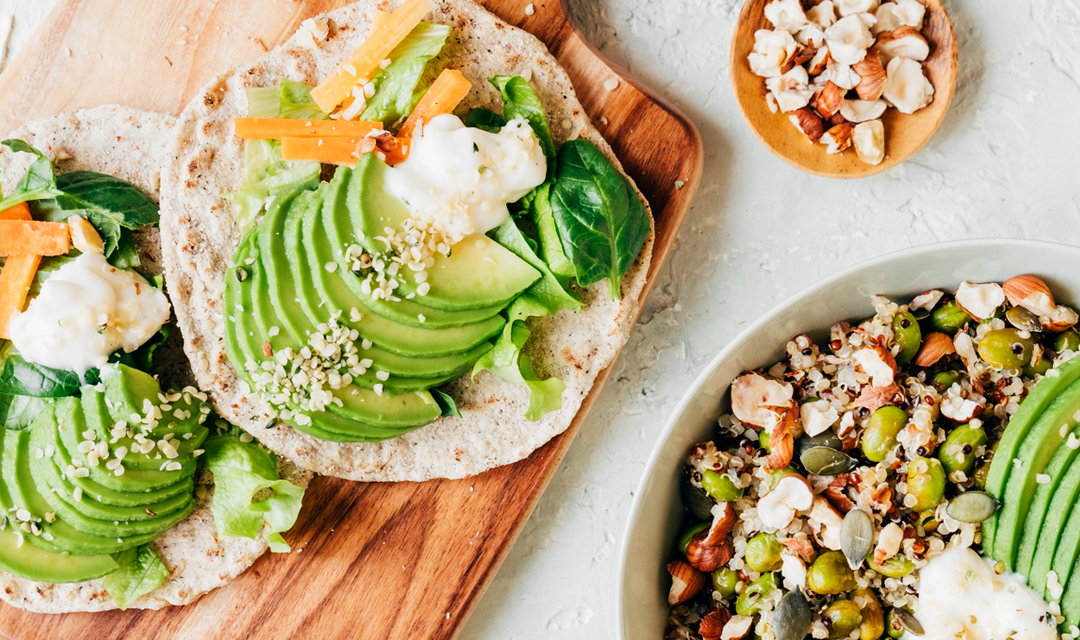
The facts at a glance
Carbohydrates are one of the most important sources of energy for our bodies and are mainly found in plants (fruits, vegetables, grains and legumes). However, not all carbohydrates are created equal.
People living with diabetes, and those at risk, do not need to avoid carbohydrates. It’s about making simple swaps and choosing healthier low GI ‘good carbohydrate’ foods instead.
There is a misconception that low GI means low carbohydrate – this is not true. Low carbohydrate looks at the quantity of carbohydrates that are eaten (often restricting the amount), whereas low GI looks at the quality of the carbohydrate and how your body responds to it.
ON THIS PAGE
PRINT, DOWNLOAD, SHARE
About carbohydrates
What are they and why do we need them?
Our bodies crave carbohydrates for good reason. Carbohydrates are an essential nutrient just like protein and healthy fats, and we need a certain amount every day to function. In fact, the benefits carbohydrates provide cannot be easily found in other foods. They are one of the most important sources of energy for our bodies and are a key fuel to power our brain, plus they make us feel good.
Carbohydrate is a macronutrient that comes in two forms – starches (e.g. potatoes, grains and pasta) and sugars (e.g. sucrose, lactose, and fructose). It is found mainly in plants (fruits, vegetables, grains and legumes) or food made from plants. When digested, the starches and sugars in carbohydrate foods are broken down into millions of glucose molecules which are released into the bloodstream, causing blood glucose levels to rise. The body then releases a hormone called insulin, which allows glucose to enter cells where it can be used to provide fuel for our brains, muscles and other vital organs.
Why carbohydrates are important
Carbohydrates are a universal fuel for most organs and tissues in our bodies.
- They are the primary fuel source for our brain, red blood cells and a growing foetus
- They are the main source of energy for our muscles during strenuous exercise
- They are used for the structural components of cell walls
- They increase serotonin levels, elevate mood and keep energy levels stable
Carbohydrate recommendations
The recommended amount of carbohydrate in the average Australia diet equates to approximately 225 to 325 grams of carbohydrates a day, for an 8,700 kJ or 2,000 calorie diet.
In Australia, the National Health and Medical Research Council set the recommendation for carbohydrates at between 45-65% of total energy intake, which aligns with recommendations from the Institute of Medicine and the World Health Organisation.
GI, starches and sugar
It’s a common misunderstanding that all sugars are high GI and all starches are low GI.
Some foods naturally high in sugars are very nutritious, and many sugar-containing foods can still be low GI, such as fresh, dried and canned fruits, flavoured milk drinks and yoghurts. Many starchy foods have a high GI, including white flour and white flour breads, potatoes, jasmine rice, rice crackers, and many breakfast cereals (puffed rice, flaked corn and wheat).
Whilst excessive intake of sugary foods and drinks should be avoided, it’s important to consider more than sugar content alone when making healthy food choices. Refined starches for example, have the same amount of vitamins and minerals as refined sugars.
For long term positive health outcomes, consider the overall nutritional quality of a food, including the amount of kilojoules, fat, saturated fat, salt and fibre, as well as the total amount of carbohydrate and its GI rating.
Carbohydrates are a universal fuel for our bodies
Primary fuel source for our brain, red blood cells and a growing foetus
Elevate mood
and keep energy
levels stable
Used for the
structural
components
of cell walls
Main source of energy for our muscles during strenuous exercise
How a low GI lifestyle can help
Low GI carbohydrates provide steady energy and are naturally more filling, resulting in feeling fuller for longer and less need to overeat. High GI carbohydrates in contrast make blood glucose levels peak and crash, leaving you feeling flat and reaching for that ‘naughty snack’ after meals. This is the ‘blood sugar roller coaster’ that many people are familiar with.
Low GI lifestyle tips
The amount of carbohydrate needed at each meal to manage blood glucose levels varies from person to person:
- Don’t cut carbohydrates – just swap to a healthier low GI choice
- Aim to spread carbohydrate intake evenly throughout the day
- Include a low GI carbohydrate choice in every meal and snack
- Keep your carbohydrate portions moderate – for most people, approximately 30-60g of carbohydrate per main meal is a good average to consume at one sitting
- Highly active people should eat more carbohydrates, and those with a sedentary lifestyle should keep consumption to the lower end of the recommended daily intake
- Good sources of carbohydrate include:
– breads, breakfast cereals, pasta, rice and other grains, legumes (beans, peas, lentils)
– starchy vegetables including corn, potatoes, and yams
– most fruits except for limes, lemons, rhubarb and avocado
– dairy foods including milk and yoghurt - Most protein foods are low in carbohydrate, however, nuts and legumes such as kidney beans and chickpeas contain carbohydrates
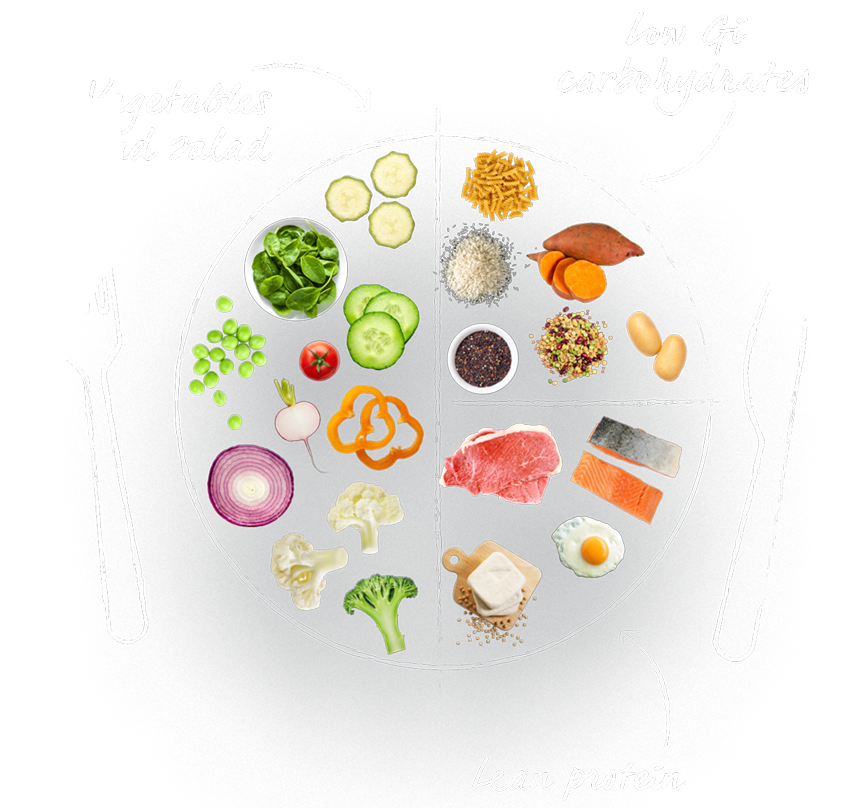
Low GI day on a plate
Aim to eat at least five serves of vegetables every day, with three or more different colours
Aim for 65-100g of protein. Good sources include lean meat, skinless chicken, fish, seafood, eggs, milk, yoghurt, cheese, legumes or tofu
Eat one serving of low GI carbohydrate at each meal. Try pasta cooked al dente, low GI rice, pearl couscous, soba noodles or quinoa
Recommended for you
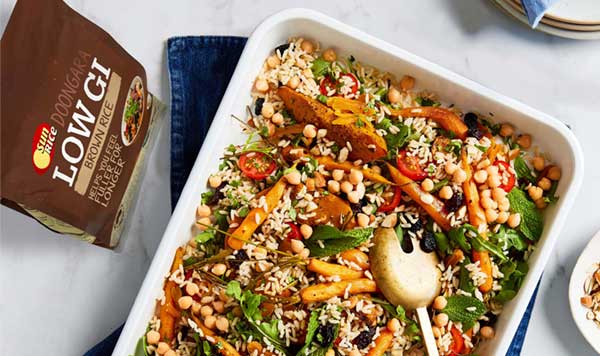
RECIPES
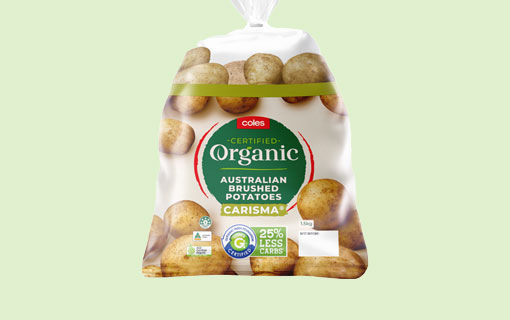
GI CERTIFIED PRODUCTS
DIABETES
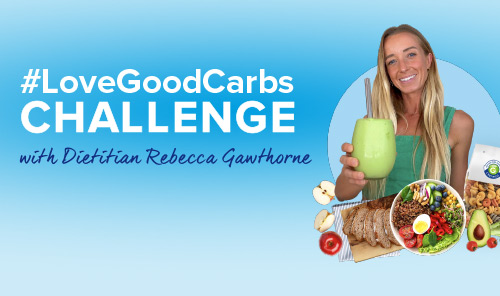
LOW GI LIVING


A low GI diet focuses on the quality of carbohydrates you eat. Good carbohydrates (or low GI carbohydrates) are more slowly digested helping keep your blood sugars stable, whereas bad carbohydrates cause your blood glucose levels to peak and crash. Want to know which carbohydrates are best for you? Try our swap it tool!
